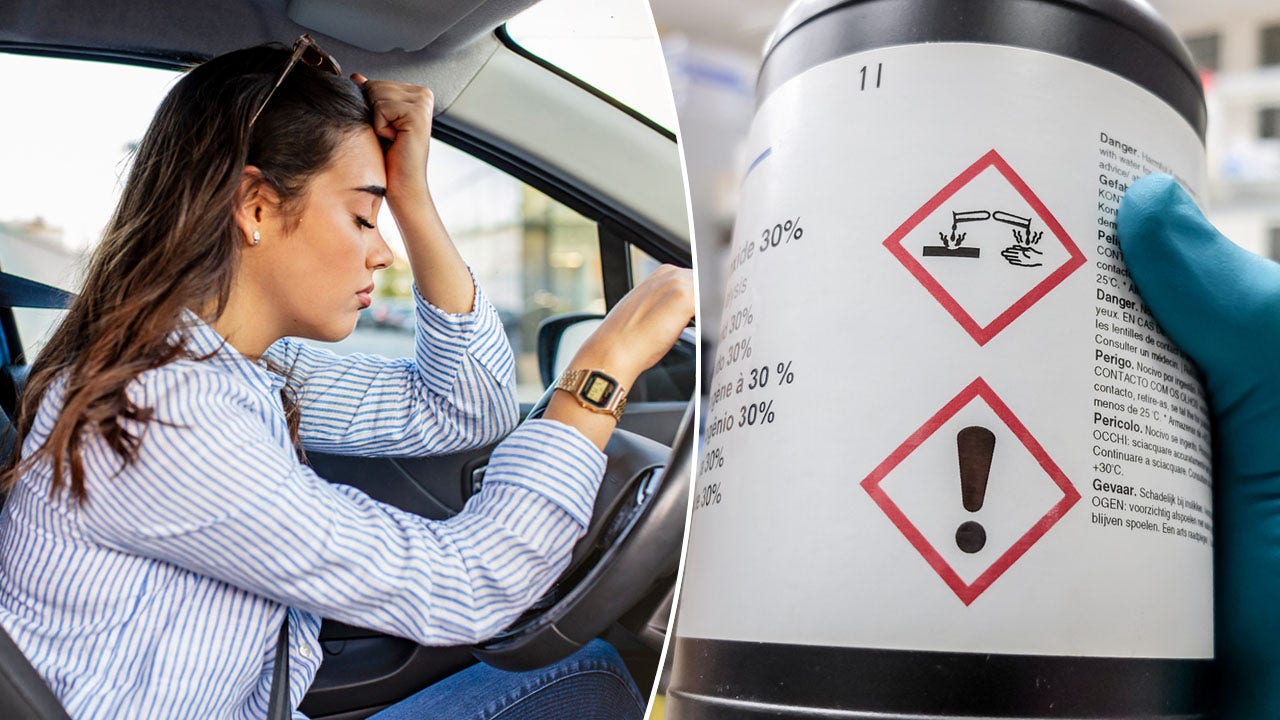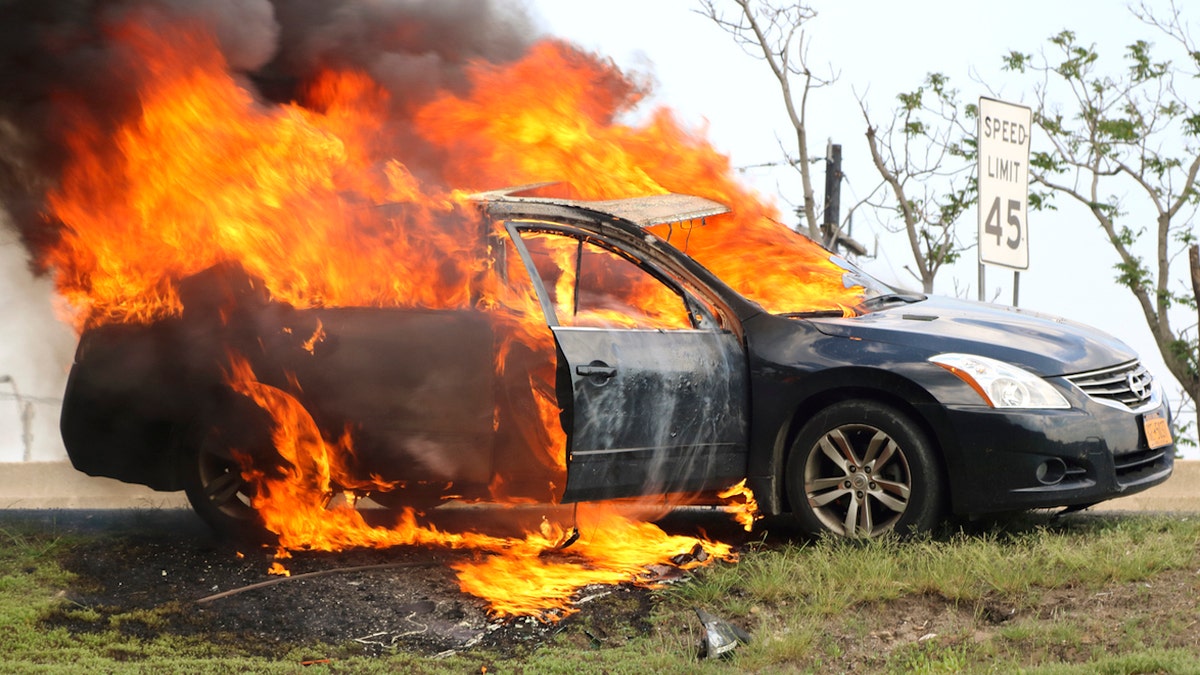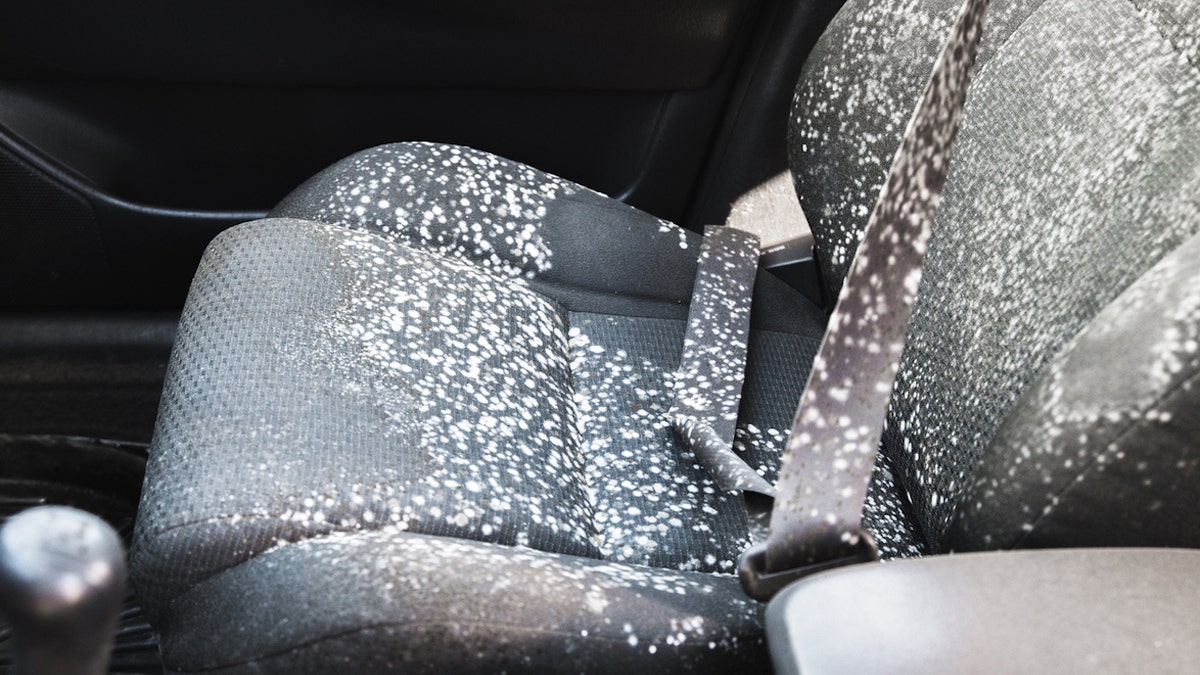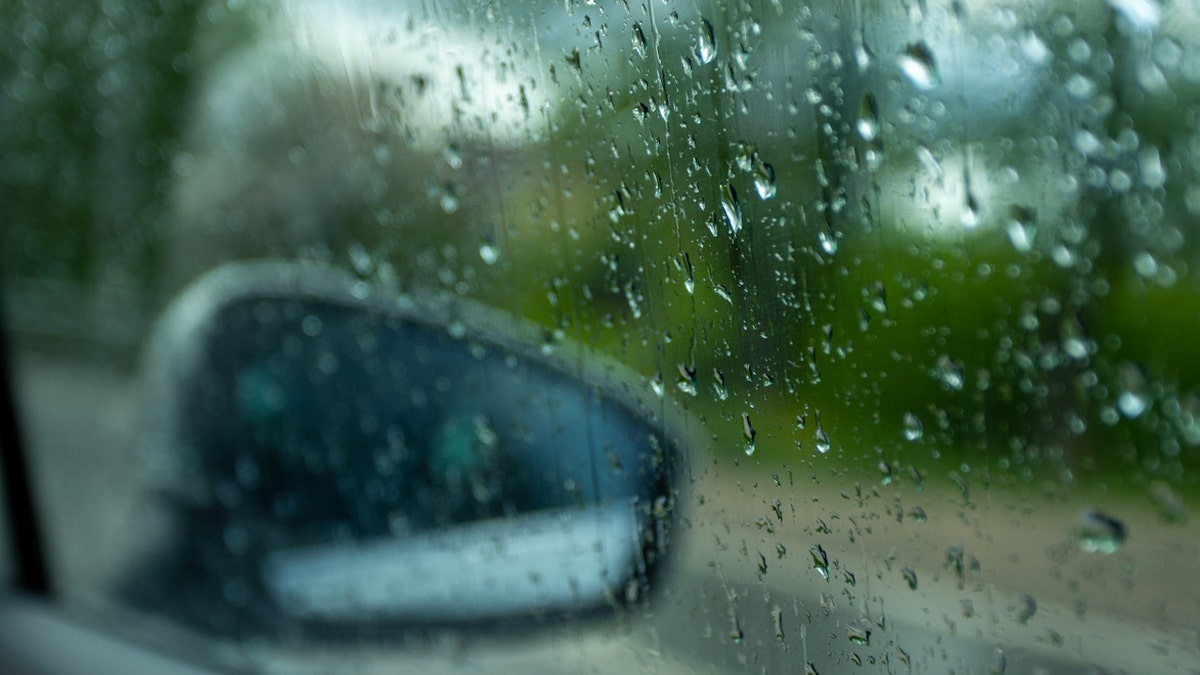Health
Still Dreaming of Retirement in the Sun Belt?

In 2015, when Diana and Charles Cox were considering where to retire, they drove their R.V. across the Southwest to visit several possibilities: Santa Fe, Sedona, Phoenix, Las Vegas.
They’d lived in San Jose, Calif., for nearly 20 years, but Ms. Cox was winding down her practice as a biotech patent attorney, and her income was dropping as taxes, housing and other living costs were rising.
Her husband, 71, a contractor, had retired years earlier. “I was having more and more trouble paying the mortgage,” said Ms. Cox, who is 69.
Phoenix won out because of its lower costs, international airport and many health care providers, essential for two people with chronic medical conditions. The couple bought a house in a 55-plus community in suburban Goodyear, Ariz., in 2016. Knowing the summer heat there would be intense, they planned to spend the season back in the Bay Area in their R.V.
But the pandemic made travel feel unsafe for years. Mr. Cox underwent treatment for prostate cancer. Ms. Cox’s father moved in and needed care. So they have mostly summered in Goodyear.
The number of older Americans like the Coxes who are exposed to extreme heat is increasing, the result of an aging population, continuing migration to heat-prone places and climate change. Researchers say the trend will only get worse.
“The places that are hot now are precisely the places getting older,” said Deborah Carr, a sociologist at Boston University and lead author of a recent study of population aging and heat exposure.
Phoenix, long a retirement destination, has averaged 108 days a year of 100-plus degree temperatures since 1970. But this year has been brutal: By July 31, Phoenix had already reached 68 days this year with temperatures over 100 degrees. Temperatures hit at least 110 degrees Fahrenheit for 31 straight days, from the last day of June to the end of July, setting a record.
And hazardous heat returned to the city just this weekend.
Summer in the Phoenix suburbs has been “miserable,” Ms. Cox said, on a midmorning when the temperature in Goodyear had already reached 106. “You really can’t go out and do things. We haven’t been as sociable as I’d like.”
This year has been particularly miserable because a delayed home renovation project forced the couple to move into their R.V. for three months, starting in June. The vehicle’s two air conditioning units are struggling. So is the refrigerator, causing salads to wilt and milk to spoil.
“A couple of days ago it got up to 92 in here,” Ms. Cox said. “The cats were prostrate under the ceiling fan.” She called the inside heat “uncomfortable, but not deadly.”
Heat can indeed be deadly, though, particularly for seniors. Last year Maricopa County, which includes Phoenix, recorded 425 heat-associated deaths, a 25 percent increase from 2021. Two-thirds occurred in people over 50.
The over-65 population increased 52 percent in Arizona between 2009 and 2019; it grew 57 percent in Nevada and 47 percent in Texas. That reflects the aging of current residents, but also continuing migration to those states.
The Census Bureau reported last year that more than 600,000 older adults moved to new states annually from 2015 to 2019, with the greatest net migration to Florida, Arizona, North Carolina, South Carolina and Texas.
At the same time, climate change is driving up temperatures in typically moderate locations. “The places that are already older — the Midwest, the Northeast, New England — are having heat exposure increase at the most rapid clip,” Dr. Carr said. “And we’re less prepared for it.”
Seniors, especially those with chronic illnesses like heart disease or diabetes, are vulnerable to extreme heat because they have more trouble with thermoregulation, the body’s ability to retain its temperature.
“Older bodies are less efficient at pumping blood to the skin and less efficient at sweating,” decreasing their ability to cool themselves, said Dr. Neelu Tummala, a surgeon and co-director of the Climate Health Institute at George Washington University.
“That makes it harder for the heart to pump,” she said, adding to cardiovascular stress and illness. Commonly used medications like diuretics and beta blockers can increase the risk of unnoticed dehydration.
The risk of kidney disease or failure rises. Struggles with mobility or cognition may prevent seniors from seeking relief.
“Extreme heat is the deadliest form of weather in the United States, much more than hurricanes or tornadoes or wildfires,” said Brian Stone, Jr., who teaches environmental planning at Georgia Tech.
He is lead author of a grim recent study estimating the impact of a major blackout during a powerful heat wave in three cities: Detroit, Atlanta and Phoenix — though the probability of such blackouts is increasing everywhere, Dr. Stone said. Electrical grid failures affecting more than 50,000 residents more than doubled in the most recent six years for which data was available.
The researchers’ models assumed five days of temperatures as high as 95 degrees (in Detroit), 97 degrees (Atlanta) and 113 degrees (Phoenix), combined with blackouts of all residences for 48 hours, followed by 72 hours of power restored gradually to the populace.
Heat-related deaths, would exceed 220 in Detroit, which has fewer air-conditioned homes than many Southern cities, the study found. In Atlanta, the death toll would be six.
In Phoenix, the intense heat could kill more than 13,000 people — not a typo — and most would be older, as in virtually every natural disaster.
Yet Dr. Carr doubts even this summer’s extreme heat will dissuade moves to popular retirement spots. Apart from mild winters, “older adults want to move where the cost of living and housing costs are lower,” Dr. Carr said.
They may see summer heat as transient or aberrational, she noted, or “they may prioritize family over the possibility of heat waves.”
That’s exactly why Jean Swain Horton moved from Sacramento (itself a hot spot) to Frisco, Texas, two years ago. Her son and daughter-in-law were relocating with a new baby, Theo, and they wanted her to come along; she moved into the same apartment complex.
Ms. Horton, 67, doesn’t love staying mostly indoors for nearly five months of the year, or living in a darkened apartment with shades pulled to block the sun. But she loves being close to Theo and helping to care for him. “I would go anywhere to be near my grandson,” she said.
John Berger, 68 and newly retired, just sold his house near Long Beach, Calif., where he and his wife never installed or needed air conditioning. They’re heading to Albuquerque, where they plan to buy a house to share with their adult daughter and her roommate.
In Long Beach, he figures a multigenerational residence would cost at least $900,000, an unaffordable price for him as a retiree. In Albuquerque, he thinks he can spend half that.
True, Albuquerque will be hot, but it averages just four days a year of 100-plus temperatures (although this year the city tallied 15 such days through July).
“Perhaps it’s denial,” Mr. Berger said of the family’s decision to live with the heat. “Perhaps it’s, ‘I’ll figure out how to make it work for me.’ People learn to adapt.”
The Coxes have adapted. They have installed solar panels on their house and plan to buy a backup battery. In case of blackouts, there’s a backup generator for the R.V. Ms. Cox always takes water with her when she leaves the house.
In her overheated R.V., however, she sometimes yearns for the breezy Bay Area. San Jose’s number of days topping 100 degrees so far this year? Zero.
“If we could afford it, I’d move back to the California coast,” Ms. Cox said. “I prefer being able to open the windows.”

Health
Introducing Our Product Reviews Team, and How We Review | Woman's World

Sign Up
Create a free account to access exclusive content, play games, solve puzzles, test your pop-culture knowledge and receive special offers.
Already have an account? Login
Forgot your password?
Get back to the Sign In
Use left and right arrow keys to navigate between menu items.
Use escape to exit the menu.
Health
What You Should Know About the Military Diet: Experts Weigh In | Woman's World

Sign Up
Create a free account to access exclusive content, play games, solve puzzles, test your pop-culture knowledge and receive special offers.
Already have an account? Login
Forgot your password?
Get back to the Sign In
Use left and right arrow keys to navigate between menu items.
Use escape to exit the menu.
Health
Could your car make you sick? Study highlights potentially cancerous toxins in vehicles

Americans may be breathing in cancer-causing chemicals while driving, recent research suggests.
A study published in the journal Environmental Science & Technology has sparked discussions about the potentially harmful toxins that could be lurking in the cabins of vehicles.
“Certainly the indoor air quality can cause health symptoms,” Dr. Ken Speath, M.D., the division chief and medical director for occupational and environmental medicine at Northwell Health on Long Island, New York, told Fox News Digital.
‘FOREVER CHEMICALS’ FOUND IN US DRINKING WATER, MAP SHOWS ‘HOT SPOTS’ OF HIGHEST LEVELS
It is important to be mindful of what you’re breathing in at home, at the office, at school and even in cars, according to Speath, who was not involved in the study.
“There can be situations where levels of harmful chemicals get high enough to potentially cause health harms,” he said.
Americans may be breathing in cancer-causing chemicals while they are driving, recent research suggests. A study published in the journal Environmental Science & Technology has sparked many discussions. (iStock)
“A car is a closed small space — so whatever is in the air is certainly going to be breathed in.”
Research reveals ‘harmful chemicals’
The peer-reviewed study looked at 101 owned vehicles in the U.S., model year 2015 or newer.
The researchers concluded that harmful flame-retardant chemicals — including those suspected of potentially causing cancer and some neurological issues — may be polluting the air inside vehicles.
DRIVING DANGERS: 9 TOP DISTRACTIONS THAT CONTRIBUTE TO ACCIDENTS, ACCORDING TO EXPERTS
“Flame retardant chemicals, which are intentionally added to vehicle interiors to meet flammability standards, are released into the cabin air from the materials to which they were applied,” lead author Rebecca Hoehn, a scientist at Duke University, told Fox News Digital.
“People in these vehicles may be exposed to these chemicals.”
Seat foam was the only material the researchers measured, Hoehn said, but other interior materials could also contain the chemicals.

The researchers concluded that harmful flame-retardant chemicals — including those suspected of potentially causing cancer and some neurological issues — may be polluting the air inside vehicles. (iStock)
“Considering the average driver spends about an hour in the car every day, this is a significant public health issue,” Hoehn warned.
“It’s particularly concerning for drivers with longer commutes, as well as child passengers, who breathe more air pound for pound than adults.”
The chemicals detected in the car cabins included a flame retardant called tris (1-chloro-isopropyl) phosphate (TCIPP), which is currently being investigated as a potential carcinogen by the U.S. National Toxicology Program.
“Considering the average driver spends about an hour in the car every day, this is a significant public health issue.”
Other flame retardants — tris (1, 3-dichloro-2-propyl) phosphate (TDCIPP) and tris (2-chloroethyl) phosphate (TCEP) — were also detected.
These are “two Californian Proposition 65 carcinogens linked to neurological and reproductive harms,” according to a press release.
Higher concentrations of the flame retardants were found during warmer weather.
“We found that the same cars, sampled in both winter and summer, had higher concentrations of flame retardants in the cabin air during the warm summer months,” Hoehn told Fox News Digital.

Flame retardants are added to vehicles to meet the National Highway Traffic Safety Administration Federal Motor Vehicle Safety Standard, which mandated their use in the 1970s. (iStock)
Flame retardants are added to vehicles to meet the National Highway Traffic Safety Administration Federal Motor Vehicle Safety Standard (FMVSS 302), which mandated their use in the 1970s, the release stated.
Flame retardants have been the “focus of concern for some time,” Speath told Fox News Digital.
More information is needed to determine the health risks these chemicals pose in humans, he said.
THESE MEDICATIONS COULD MAKE DRIVING DANGEROUS, THE FDA WARNS
“A number of these have been demonstrated in studies to have health harms in animals,” he said.
“That doesn’t necessarily mean that would be true for humans, but it raises that possibility, so we need to study these chemicals more in relation to their effects on humans.”

Higher concentrations of the flame retardants were found during warmer weather, the researchers said. (iStock)
Emanuela Taioli, M.D., PhD, the director of the Institute for Translational Epidemiology at Icahn School of Medicine at Mount Sinai in New York City, was also not part of the study, but shared her reactions.
“This is a very relevant finding, since it may prompt changes in cars’ upholstery, as well as in other parts of the car where there is foam,” she told Fox News Digital via email.
“We also want to know more about this finding and monitor whether it is replicated by other investigators.”
Other sources of toxins
Stephen Showalter, a home inspector and indoor environmental air consultant with Showalter Property Consultants in Maryland, said he typically interviews clients about their history of illness, then tests for potential sources of sickness in buildings, cars, RVs and boats.
Mold is a common culprit when it comes to health issues triggered by one’s environment, he said in an interview with Fox News Digital.
TOXIC CHEMICAL POISONING: HAVE YOU BEEN AFFECTED? HOW TO KNOW
Dr. Daniel Johns, a member of the International Society of Environmentally Acquired Illnesses and a chiropractor who practices in Annapolis, Maryland, echoed Showalter’s concerns about mold-related health issues.
Johns also cautioned that cars can be a daily source of mold exposure.
“Any water that leaks from a window, sunroof or convertible can get into the carpet and cause mold growth,” he said during an interview with Fox News Digital.

Mold is a common culprit when it comes to health issues triggered by one’s environment, according to an environmental expert. (iStock)
“Mold can start growing on a wet surface within 24 to 48 hours.”
For families with small children, spilled sippy cups could play a role when it comes to mold in cars, Johns warned.
“The water seeps into the upholstery and doesn’t get noticed or properly dried out, and the whole seat can become moldy,” he said.
“Mold can start growing on a wet surface within 24 to 48 hours.”
“Every time you sit on the seat, it releases a mold spore cloud into the car. Once that happens, you can’t clean it away. The upholstery must be removed and replaced.”
The impact of these potentially harmful pollutants can vary from one person to the next, experts told Fox News Digital.

For families with small children, spilled sippy cups could play a role when it comes to mold in cars, an expert warned. (Kids and Car Safety)
People metabolize chemicals and toxins in different ways, according to Taioli.
“Metabolism happens through enzymes that the body produces,” he said.
“Each of us has a different genetic profile that defines our metabolic capacity. As a consequence, the same amount of toxin may be metabolized better/faster by some, and worse/slower by others.”
Tips for ensuring safe interiors
While further research on car-borne chemicals is needed, experts say people can take measures to limit exposure.
“People may be able to reduce their exposure by ventilating their cars,” Hoehn advised.
“For example, rolling down the windows to let out contaminated air, or pulling in fresh air with climate control systems, should reduce concentrations.
“Ultimately, reducing the amount of flame retardants added to vehicles in the first place would provide the greatest reduction in exposure risk.”
Controlling your vehicle’s cabin temperature may also reduce exposure, she added.
“Parking in a garage or shade instead of full sun may reduce the cabin temperature and limit the extent of flame retardant release,” Hoehn said.
The researchers also called for action from regulatory agencies and vehicle manufacturers.
CLICK HERE TO SIGN UP FOR OUR HEALTH NEWSLETTER
“Ultimately, reducing the amount of flame retardants added to vehicles in the first place would provide the greatest reduction in exposure risk,” Hoehn noted.
“If flammability standards for vehicles could be revised to meet fire safety guidelines without the use of added flame retardants, risk of flame retardant exposure from personal vehicles could be greatly reduced.”

To prevent mold in a vehicle, experts recommend keeping your windows up when it rains or snows to prevent water from permeating the carpet or fabric. (iStock)
Having your car’s air quality and surfaces tested is one way to reduce the risk of exposure to allergens, toxins and chemicals, experts told Fox News Digital.
To prevent mold in a vehicle, Showalter recommends keeping your windows up when it rains or snows to prevent water from permeating the carpet or fabric.
He also cautioned about leaky air conditioners, which can foster mold growth in vehicles, and about leaving wet items in the car.
Lastly, before buying a used car, he said it is important to check the vehicle’s history to make sure it doesn’t have flood damage, which can lead to mold and other issues.
If you think you are experiencing illness due to chemical exposure in your car, home or office, it’s best to see a health care professional to discuss your symptoms.
Fox News Digital reached out to several major car companies for comment.
For more Health articles, visit www.foxnews.com/health.
-

 World1 week ago
World1 week agoIndia Lok Sabha election 2024 Phase 4: Who votes and what’s at stake?
-

 Politics1 week ago
Politics1 week agoTales from the trail: The blue states Trump eyes to turn red in November
-

 World1 week ago
World1 week agoBorrell: Spain, Ireland and others could recognise Palestine on 21 May
-

 Politics1 week ago
Politics1 week agoFox News Politics: No calm after the Stormy
-

 World1 week ago
World1 week agoUkraine’s Zelenskyy fires head of state guard over assassination plot
-

 Politics1 week ago
Politics1 week agoUS Border Patrol agents come under fire in 'use of force' while working southern border
-

 World1 week ago
World1 week agoCatalans vote in crucial regional election for the separatist movement
-

 News7 days ago
News7 days agoSkeletal remains found almost 40 years ago identified as woman who disappeared in 1968





/cdn.vox-cdn.com/uploads/chorus_asset/file/25430225/247065_Vergecast_Gaming_Senses_Smell_SHaddad.png)









